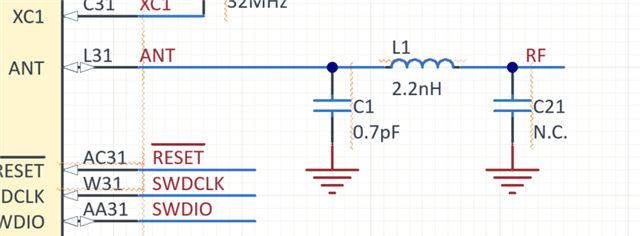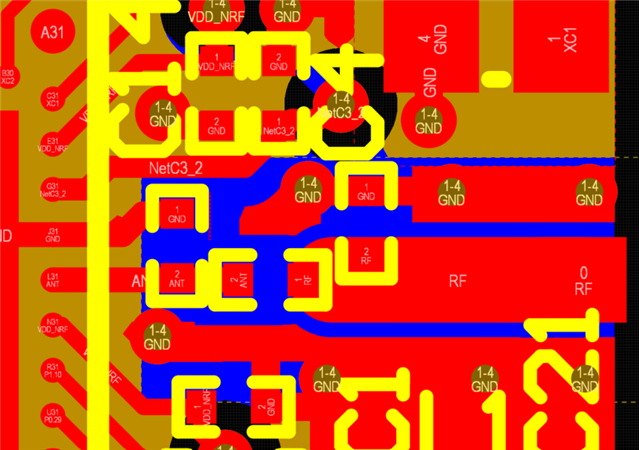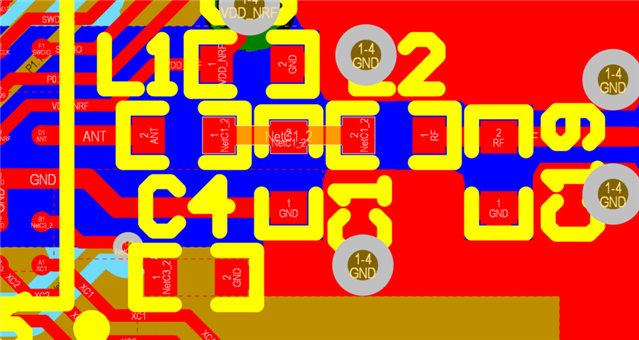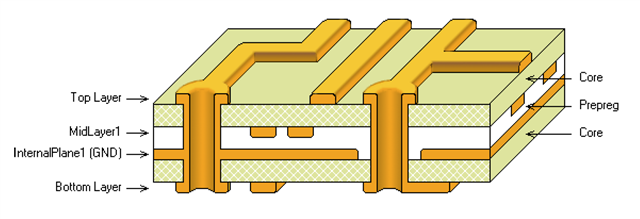I have looked at the Altium Designer files for the following examples:
- nRF5340-CLAA Reference (nrf5340_claa_config2)
- nRF5340 Development Kit - Hardware files 2_0_0
- nRF5340 Audio Development Kit - Hardware files 1_0_0
It seems that there are significant differences between these boards in the area around the Bluetooth antenna that I would like to get some guidance on.
Ground plane
In (1) and (2) all copper on the the inner layers underneath the matching netork at the nRF5340 ANT pin is removed. The copper polygon on the bottom layer is the reference plane for both the matching network and the transmission line going to the antenna.
On (3), copper on inner layer 1, the one just below the micro, acts as reference plane for the capacitor closest to the ANT pin and the first terminal of the series inductor. The transmission line between the matching network and the antenna is referenced to another copper plane further down.
Matching network ground references
(1) and (2) First matching capacitor connected directly to GND pin on the micro, not to ground copper pour. This is in line with the recommendations in the datasheet
(3) First matching capacitor connected directly to GND pin on the micro AND to ground reference plane on inner layer 1.
Board configuration
The board that I work on now has 7 layers in a symmetric stackup with 3+1+3 copper layers. The 3 layer stacks are connected with micro vias and the single layer in the center is a flex layer. The intention for the radio section is to use the flex layer as reference plane to achieve copper traces with similar width as the matching components for the radio. The center GND balls of the BGA package will have through hole vias to connect 0V on all layers.
Question
Which reference plane should the matching network between the microcontroller and the 50 ohm transmission line use? The same, as for (1) and (2), or split between the different sides of the matching network, as (3)?
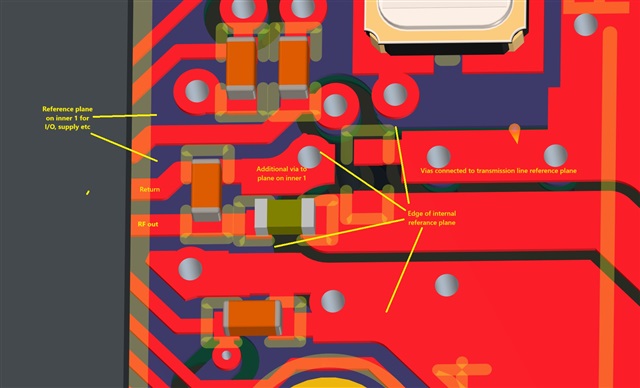
nRF5340 Audio DK (3)

nrf5340_claa_config2 (1)
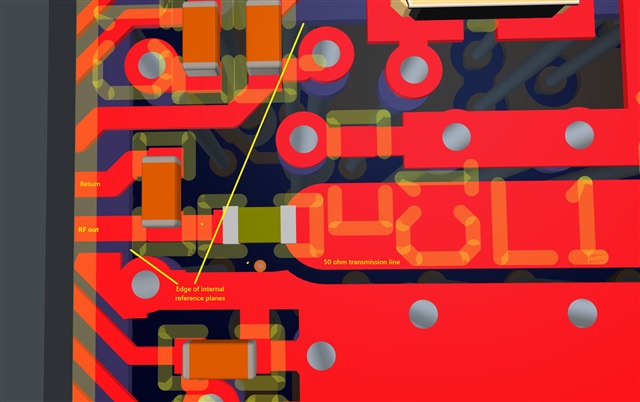
nRF5340 DK (2)



